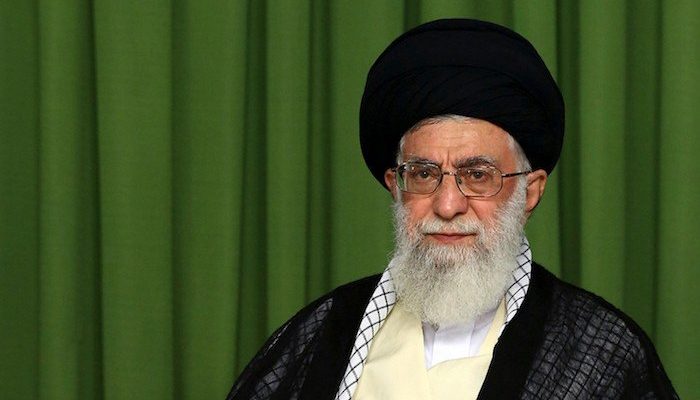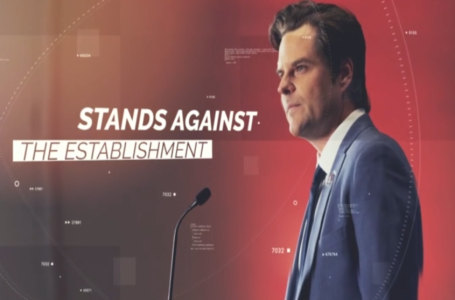Iranian Rial Loses 30% of its Value Overnight

In the midst of all its other woes, the Islamic Republic of Iran has just suffered the worst economic collapse of its existence: the Iranian rial has lost 30% of its value overnight. The Iranians have for years seen their economy decline because Muslim fundamentalists, in way over their heads, rather than technocrats, have been in control of that economy. Their mismanagement, their expensive overseas commitments to proxies and allies, and the billions they have been spending on their nuclear weapons and ballistic missile programs, have all contributed to a colossal misallocation of resources. More on this latest, and most dramatic, sign of the country’s impoverishment, can be found here: “Iranian rial collapses, ‘loses 30% of value’ – reports,” by Ohad Merlin, Jerusalem Post, April
A sharp crash in the value of the Iranian rial was reported yesterday, with some sources reporting that one US dollar would now be worth over 660,000 Iranian rials in some unofficial markets, while others stressed the fact that the already weak currency suffered a blow leading to the loss of 30% of its worth overnight; despite the regime’s official digits showing no major changes.
Let’s remember that in 1978, just before the Shah’s regime fell, the dollar was worth 71 rials. As of April 8, one dollar is worth 660,000 rials. It’s weimaresque, cauchemaresque. There has not been a decline in value like that anywhere since the Second World War. Naturally, the government of the Supreme Leader, having no clue as to how to right the economy, is doing everything it can, at a time of growing protests all over the country directed at the regime’s economic performance, to divert attention to foreign affairs, and the need to respond to “aggression” by the Jewish state.
One member of the Majlis (the Iranian parliament) demanded to know from chair Mohammad Baqer Qalibaf what steps the authorities are going to take, calling on the parliament to meet with the governor of the country’s central bank, and wondering, “if we don’t have money – why are we printing more? And if we do have money – why is it so costly?” Qalibaf answered they are “aware of the situation and will hold meetings inshallah (Arabic: God willing),” sparking a wave of disappointed and sarcastic comments.
That a member of the Majlis dared to take the government to task, mocking its choices of either printing money (and thereby bringing down the value of the rial still more), or of leaving things as they are — i.e., doing nothing — and kicking the can down the road with a promise to “hold meetings” that, of course, will do nothing to begin to solve the problem, shows the extent of the rage against the regime for the impoverishment it has caused. For many Iranians, rage has overcome fear.
One social media user commented ironically: “oh you’re going to hold a meeting? Bulls**t,” while another user uploaded a video showcasing the rial’s loss of buying power, showing how a 50,000 Iranian rial banknote ($1.2 at the official rate) used to be enough to buy 30 eggs only a decade ago, while nowadays it suffices to buy only one single egg.
Several small demonstrations took place in different parts of Iran on the backdrop of the economic hardships in the past several days, including a farmers’ strike in eastern Isfahan who took their tractors to the streets protesting water-related measures, a protest of retired pensioners in Arak against the cost of living, a truck drivers’ demonstration in front of the local headquarters of the national petrol company in Sistan and Balochistan, Iran’s poorest province, protesting against the price of fuel, and a medical staff demonstration in Shiraz protesting their salaries not being paid on time. Additionally, disruptions were recorded in the online registration services to receive government-subsidized fuel coupons as more citizens applied for them.
A mess, forsooth, everywhere you look in the Islamic Republic. Farmers in Isfahan whose crops are failing for want of water, because the state has not put enough money into drip irrigation and water production from the ambient air (an advance that comes from Israeli scientists) are furious. Pensioners in Arak are angry that their pensions are not keeping up with inflation, truck drivers in Sistan and Balochistan are furious that the price of oil has gone way up with the removal of subsidies. Medical personnel in Shiraz complain that have not been paid on time. In every part of the country there is great economic distress.
And the regime has no answers. For how can it own up to its colossal mismanagement? How can it explain away the tens of billions of dollars stolen by the Supreme Leader and his associates? And how does the regime justify spending the billions of dollars that Tehran has poured into weaponry and financial aid for the Houthis in Yemen, Hamas in Gaza, the Assad regime in Syria and, especially, Hezbollah in Lebanon? How can the Iranian government justify the tens of billions of dollars it has so far spent on its nuclear bomb and ballistic missile programs, all while the steady impoverishment of the country, that began when Khomeini came to power in 1978, continues apace? To admit to any of that would lead to widespread mass protests over the economy, of the kind that swept Iran in 2017 and 2019, but much larger.
Comments
Leave a Reply





















Tony Rice says
Why doesn’t the Iranian government offer their people 72 virgins while in this life and not wait till they die. After all a bird in the hand is worth two in the ” bush “. Might keep them quiet for a while . That the women get nothing doesn’t matter as they are second class citizens, even their views are worth only half that of a man’s.
KuhnKat says
Now remember the dollar has lost a huge chunk of its value in the last 20 years…
Transmaster says
1 US Dollar is equal to, 64,750 IRR’s. Except for the it might not be too safe to go, Your vacation dollar would go along way in Iran.